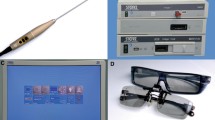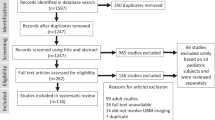Abstract
Objective
To report the utility of nasal endoscopic system in viewing the iridocorneal angle and fundus using various nasal endoscopes and light sources and to determine which type suits best to image a given location in the eye.
Methods
This is a prospective observational study of 20 eyes of 10 consecutive infants, who were scheduled for irrigation and probing for congenital nasolacrimal duct obstruction under general anesthesia. The pupils were dilated, viscoelastic gel was applied on the cornea and imaging was performed using nasal endoscopes. The endoscopes used were of 2.7 mm and 4 mm diameter, each with various angulations of 00, 300 and 700. Two different cold light illuminators (Xenon and Halogen) were used uniformly in all cases. Images were analyzed for their quality, clarity and extent of the fields captured.
Results
In all the 20 eyes, nasal endoscope provided a clear circular view of the iridocorneal angle and wide-field fundus view in a single glimpse. The 4 mm endoscope offered a wider view while in-air disc analysis was better with the 2.7 mm endoscope. Angulated endoscopes were more useful in imaging the iridocorneal angle, peripheral retina up to the ora serrata and ciliary body. The image quality with the xenon and halogen light sources were found to be comparable. The time taken for a single eye examination did not exceed 5 min.
Conclusions
With good techniques and appropriate selection of nasal endoscopes, viewing of the iridocorneal angle and fundus is easy, possibly less expensive and very useful in infants.




Similar content being viewed by others
References
Yannuzzi LA, Ober MD, Slakter JS, et al. Ophthalmic fundus imaging: today and beyond. Am J Ophthalmol. 2004;137:511–24.
Constable IJ, Yogesan K, Eikelboom R, Barry C, Cuypers M. Fred hollows lecture: digital screening for eye disease. Clin Experiment Ophthalmol. 2000;28:129–32.
Tran K, Mendal TA, Holbrook KL, Yates PA. Construction of an inexpensive hand-held fundus camera through modification of a consumer ‘point and shoot’ camera. Invest Ophthalmol Vis Sci. 2012;53:7600–7.
Gliss C, Parel JM, Flynn JT, Pratisto H, Niederer P. Toward a miniaturized fundus camera. J Biomed Opt. 2004;9:126–31.
Shanmugam PM, Ramanjulu R, Mishra KC. Fundus imaging with a nasal endoscope. Indian J Ophthalmol. 2015;63:69–70.
Shanmugam MP, Mishra DK, Madhukumar R, Ramanjulu R, Reddy SY, Rodriques G. Fundus imaging with a mobile phone: a review of techniques. Indian J Ophthalmol. 2014;62:960–2.
Haddock LJ, Kim DY, Mukai S. Simple, inexpensive technique for high quality smart phone fundus photography in human and animal eyes. J Ophthalmol. 2013. doi:10.1155/2013/518479.
Paques M, Guyomard JL, Simonutti M, et al. Pan retinal high-resolution colour photography of the mouse fundus. Invest Ophthalmol Vis Sci. 2007;48:2769–74.
Guyomard JL, Rosolen SG, Paques M, et al. A low-cost and simple imaging technique of the anterior and posterior segments: eye fundus, ciliary bodies, iridocorneal angle. Invest Ophthalmol Vis Sci. 2008;49:5168–74.
Solley WA, Sternberg Jr P. Retinal phototoxicity. Int Ophthalmol Clin. 1999;39:1–12.
Kwarg SG, Linstone FA, Daniels SA, et al. Incidence, risk factors and morphology in operating microscope light retinopathy. Am J Ophthalmol. 1987;103:255–63.
Gomolin JE, Koenekoop RK. Presumed photic retinopathy after cataract surgery: an angiographic study. Can J Ophthalmol. 1993;28:221–4.
Byrnes GA, Antosyzk AN, Mazur DO, Kao TC, Miller SA. Photic maculopathy after extracapsular cataract surgery. A prospective study. Ophthalmology. 1992;99:731–7.
Contributions
MJA: Concepts, imaging, manuscript writing and will act as guarantor for this paper; SJ: Concepts and manuscript writing; JC: Grading of photographs and imaging.
Author information
Authors and Affiliations
Corresponding author
Ethics declarations
Conflict of Interest
None.
Source of Funding
None.
Rights and permissions
About this article
Cite this article
Ali, M.J., Jalali, S. & Chhablani, J. Wide-field Digital Ophthalmic Imaging in Infants using Nasal Endoscopic System. Indian J Pediatr 83, 645–649 (2016). https://doi.org/10.1007/s12098-015-1963-4
Received:
Accepted:
Published:
Issue Date:
DOI: https://doi.org/10.1007/s12098-015-1963-4




